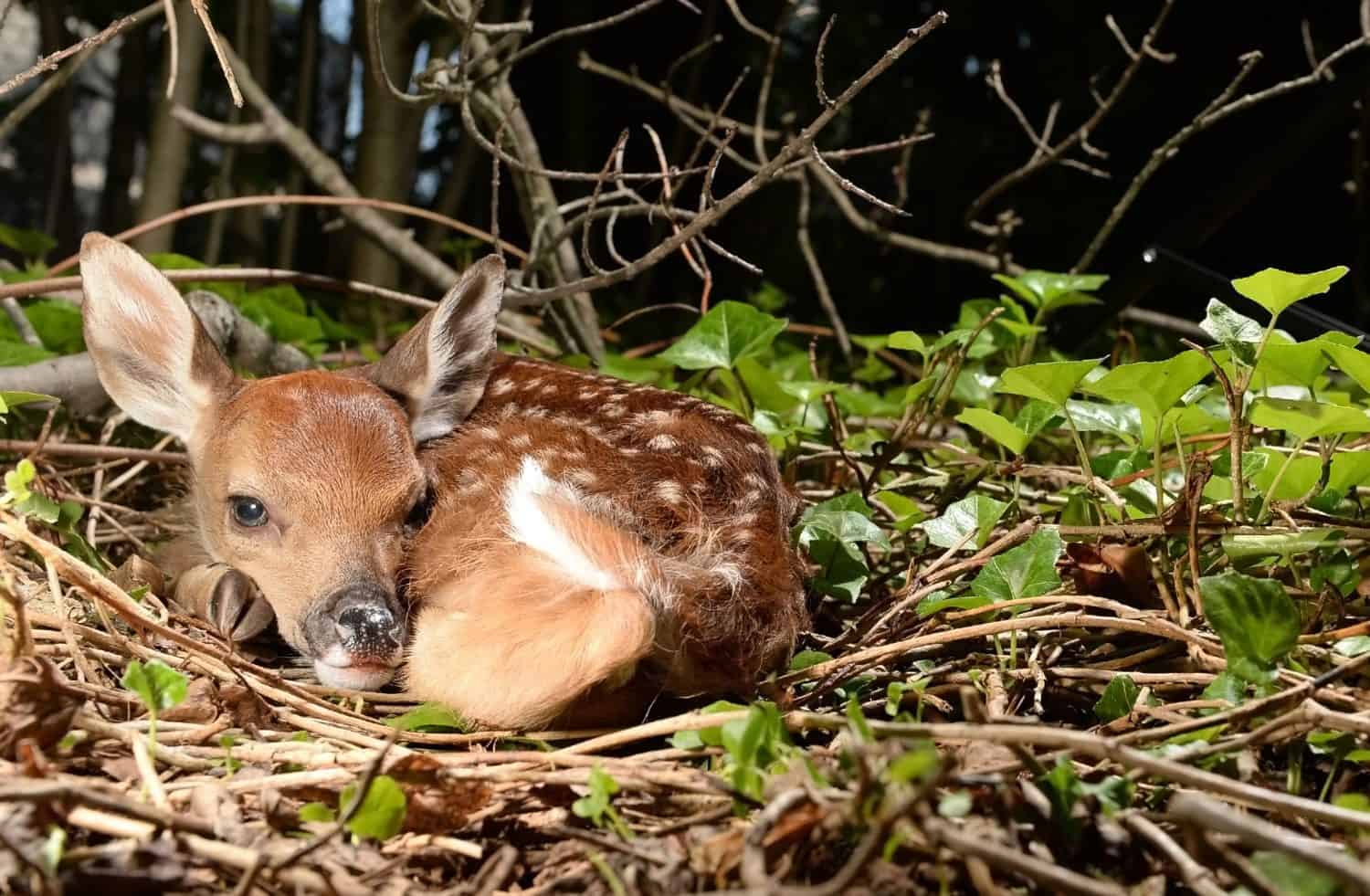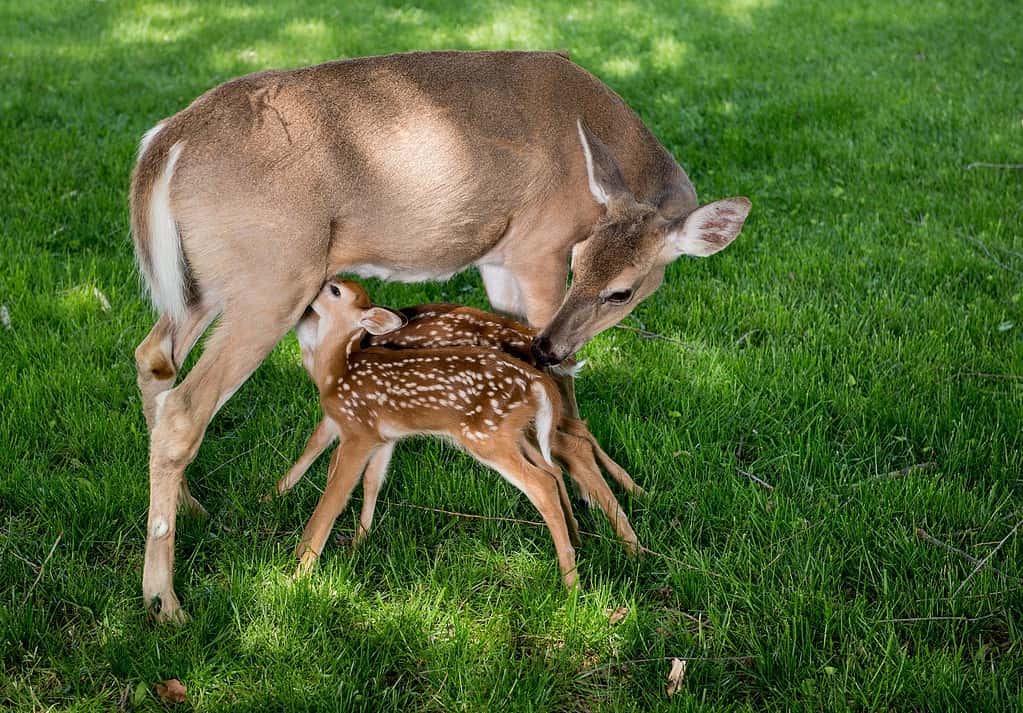Many mammals keep their babies close to them. To humans, it seems natural that a baby would be with its mother, since that is how people raise their offspring. However, for some species, it is natural to leave their baby alone for long stretches of time. Some nesting birds, eastern cottontail rabbits, and white-tailed deer all spend much of their time away from their babies. But is this safe? And why do they do it? Here’s why deer leave their fawns.
When Are Babies Born?

Fawns are born with white spots and the pattern helps them camouflage when they lie in grass.
©iStock.com/nearandfar
White-tailed deer females (called does) have one to three fawns in one pregnancy once a year. They typically give birth between May and June. While fawns can walk within about an hour after birth, they stay bedded down for the first five to eight days. At this age, even though they can walk, they are not strong enough to flee from predators.
Why Fawns Are Left Alone

A healthy fawn will lay quietly and patiently wait for its mother to return twice a day.
©L.E.MORMILE/Shutterstock.com
This brings us to why fawns are left alone. The biggest reason why deer leave their fawns alone is for protection. This may seem backward; wouldn’t a baby be safer with its mother? In the case of deer, the answer is no. While fawns can walk almost immediately after they are born, their spindly legs are too weak for them to evade predators. This means that if they went everywhere with mom and a threat arose, the mother could run away but the baby would be left behind.
So, instead of accompanying their mother, fawns are left in one place. If a doe has multiple babies, she will leave them in different locations to lessen the odds of predators finding all the fawns. Mom will avoid the area the fawns are in to avoid attracting predators or threats to the babies. Fawns are nearly odorless for the first week of their lives, making it difficult for predators to locate them. If a mother returns regularly to one location, this may tip off a predator that wouldn’t have noticed the baby otherwise.
For the first week of life, fawns remain exactly where their mother left them. From eight to 30 days old, the fawn enters its “flush” phase. During this time, the fawn will lay still in one spot unless they are startled or flushed from their hiding spot. When this happens, they run to a new nearby spot to hide and bed down once again.
How Mother Deer Care for Fawns

Female deer have one to three babies each spring. While quadruplets are possible, they are very rare.
©L.E.MORMILE/Shutterstock.com
While they are left alone for long stretches of time, fawns are not abandoned. The mother returns at dusk and dawn to feed and groom her baby. Deer are very attentive mothers and give the babies everything they need. People should not feed or move fawns, as this can disrupt their natural development and cause harm. A fawn should never be moved, as the mother will not be able to locate it when she returns.
When Babies Join Their Mothers

Fawns begin to stay with their mother when they are approximately 30 days old.
©Lester Graham/Shutterstock.com
Fawns enter their “active” phase at around one month old. During this phase, they begin to venture out with their mom. They are strong enough at this point to flee from predators, so it is safe for them to come out of hiding. The fawn is weaned at two to three months of age. Mothers usually drive away their male fawns in the fall before breeding season starts to avoid chances of inbreeding. However, female fawns stay with their mother for two years or longer. In fact, females often form family groups that stick together for a lifetime. These herds are led by a matriarchal female and can be composed of multiple generations of offspring.
Thank you for reading! Have some feedback for us? Contact the AZ Animals editorial team.








